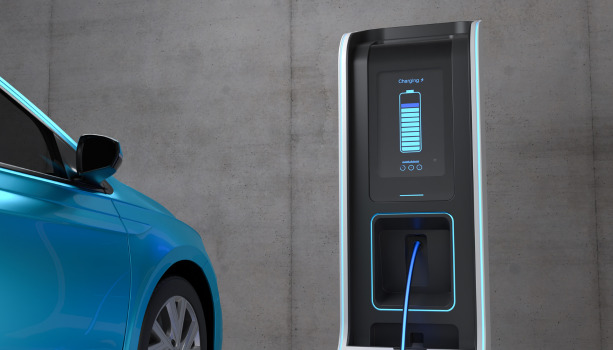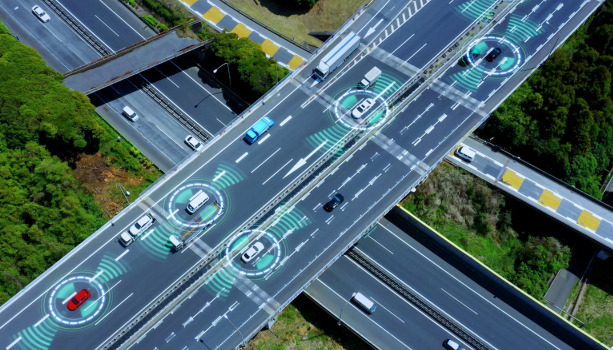Imagine purchasing a meal at a drive-thru. You order and pay for the meal on your infotainment screen, proceed down the driveway, pick up the food, and drive away. With car commerce, you no longer need to wait in line to pay.
From Ecommerce to Digital Payments
Ecommerce makes up a significant portion of our consumer economy. From electronics to books, clothes to groceries, consumers now conduct a large proportion of their purchases online. Conversely, the more people shop online, the better the ecommerce experience becomes — with easier access to product comparisons and reviews, falling shipping rates, and most importantly, convenient payment options.
The growth in digital payment options has not only benefited the e-commerce industry, but also made our offline purchases more enjoyable. Contactless payment enabled by NFC (near field communication) technology allowed us to pay by tapping our cards near the point-of-sale terminal. Soon later, Samsung Pay, Apple Pay, along with a variety of mobile applications allowed us to pay by tapping our smartphones, with all the payment cards and loyalty points bundled up in one single app.
In this blog, we will have a look at the next big thing in digital payment — car commerce.
The Third Personal Device
After computers and smartphones, cars are now becoming the third personal digital device. As an increasing number of cars come equipped with internet connectivity, industry experts are looking for ways to maximize its usage and benefits.
Smartphones have become one of the leading causes of traffic accidents. Using a smartphone while driving is not only dangerous, but also inconvenient. This is why automakers have been looking for ways to integrate all the necessary smartphone functionalities into the in-vehicle infotainment system.
Among all the functionalities, payment is one of the most important. People constantly need to pull out their wallet or smartphone for making purchases and collecting loyalty points at gas stations, parking lots, and drive-thrus. The idea of having the car do the payment has driven the development of car commerce.
The Benefits of Car Commerce
Car commerce, or strictly speaking, carpay, is conducted through applications built into the in-vehicle infotainment system, and enabled through NFC or Bluetooth technology.
From a driver’s perspective, all they need to do is to sign up for an account in the built-in payment app run by the in-vehicle infotainment system, then input their desired payment card information into the application — the same way as registering for Samsung Pay and Apple Pay.
Once registered, they would be able to pay for a variety of purchases with their car without the need to reach for their wallet or smartphone. Car commerce might not save a lot of time and effort on a per person basis, but on aggregate, it can significantly reduce wait times at gas stations, car washes, parking lots, highway entrances, and drive-thrus.
The Current Progress
Many automakers around the world are currently working with ecommerce firms and software developers to enable payment features for automobiles.
South Korean automaker Hyundai is one of the pioneers in the development of car commerce. After co-developing its own Connected Car Operating System (ccOS) with subsidiary firm Kia, it teamed up with a number of ecommerce firms, along with oil company GS Caltex, food and beverage firm SPC, and software solution developer OWiN, to bring digital payment into cars. In early 2020, Hyundai introduced its first in-vehicle payment app for its luxury division Genesis Motors. Named Genesis Carpay, the payment app is currently available on the Genesis GV80 SUVs.
Other automotive manufacturers including Toyota, Honda, and Ford are also developing their own in-vehicle payment applications. For instance, Honda has been working with Visa on an application where customers can pay for vehicle-related purchases like parking, tolls, and gas. Visa and Pizza Hut are also working to develop an in-vehicle payment system in which the driver would be able view the menus and pre-order their food without the need to line up at drive-thrus.
These car commerce development projects have drawn a lot of investments. Last month, Wall Street Journal reported that Goldman Sachs was looking to purchase General Motors’ credit card business, betting on the future prospects of car commerce.
Car commerce also faces skepticisms as some believe that it only provides a marginal improvement on convenience, doubting that consumers would buy into it. Nevertheless, more and more car commerce apps are expected to roll out over the next couple of years. Very soon, we will be able to witness the market response.
AutoCrypt AFW, Securing the Future of Car Commerce
Car commerce is one of the benefits that comes with vehicle internet connection. Just as how the connected infotainment system makes our driving experience more fulfilling, protecting the system from hackers is crucial to our personal safety.
AutoCrypt AFW is an advanced in-vehicle firewall that protects all the vehicle systems from external attacks, including the infotainment system, audio system, ADAS, and other on-board units. Working with a number of global automakers, AUTOCRYPT ensures that consumers can enjoy their car commerce experience without the need to worry about safety.
To learn more about AUTOCRYPT’s security solutions, click here.



